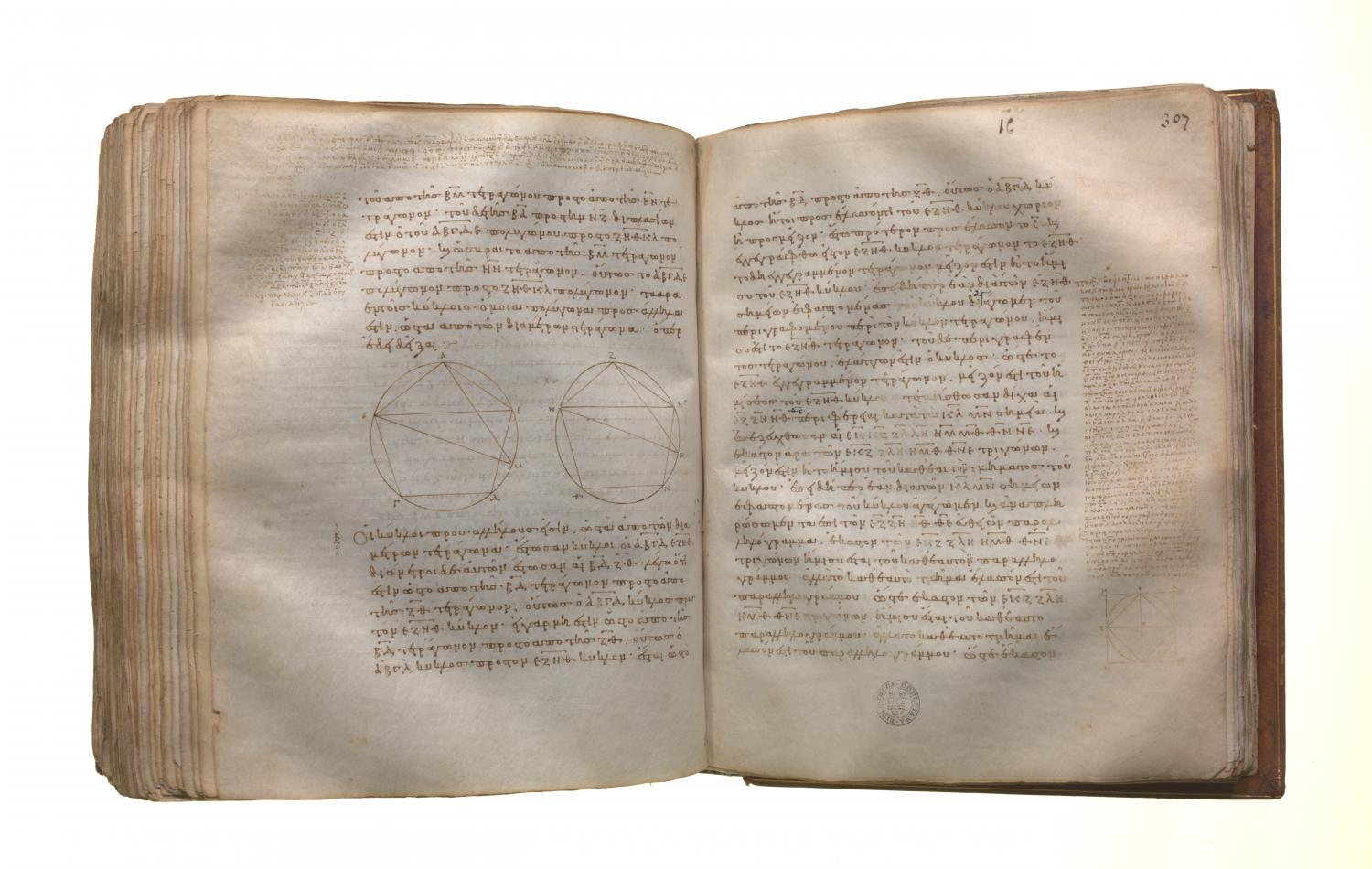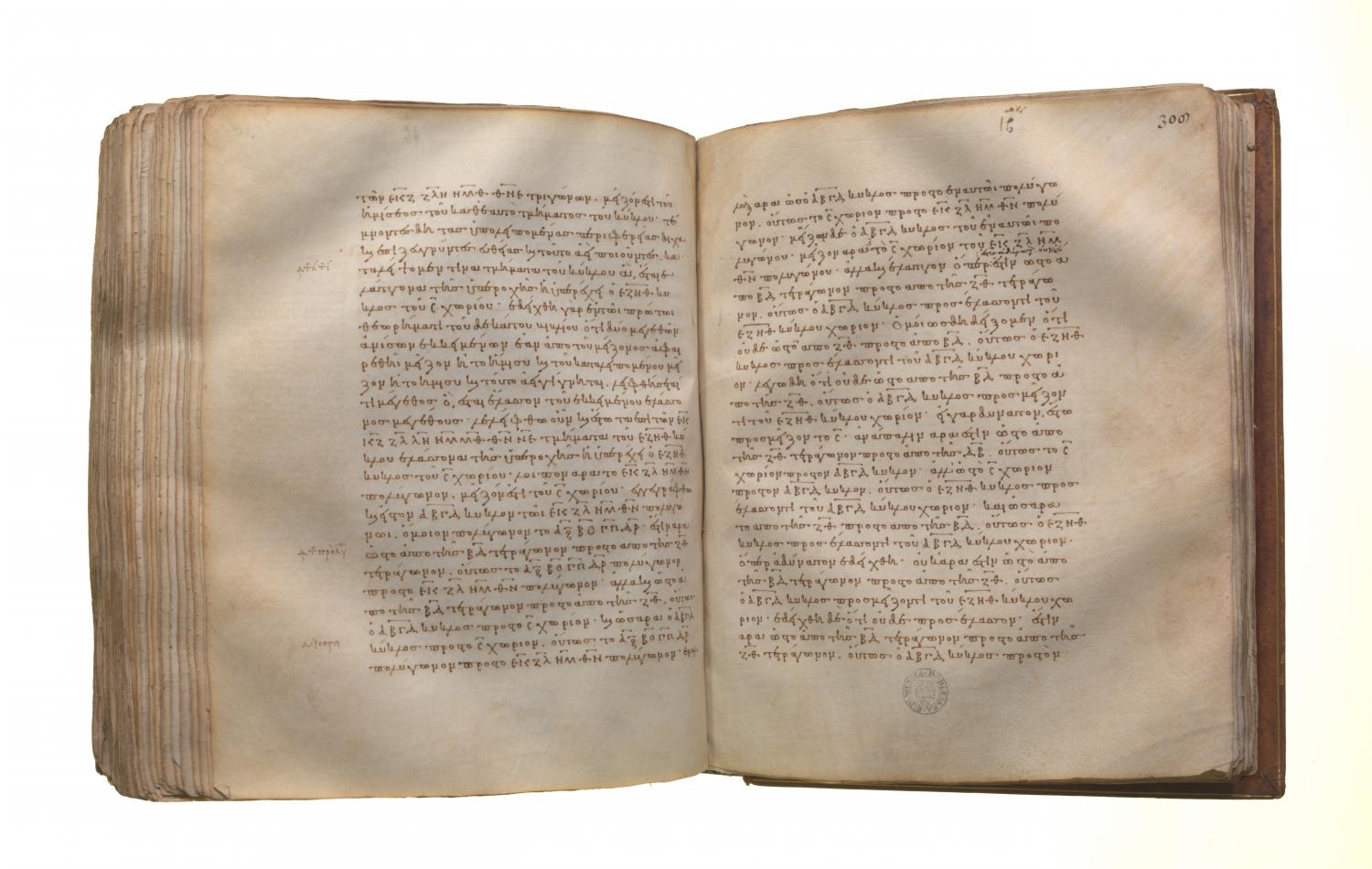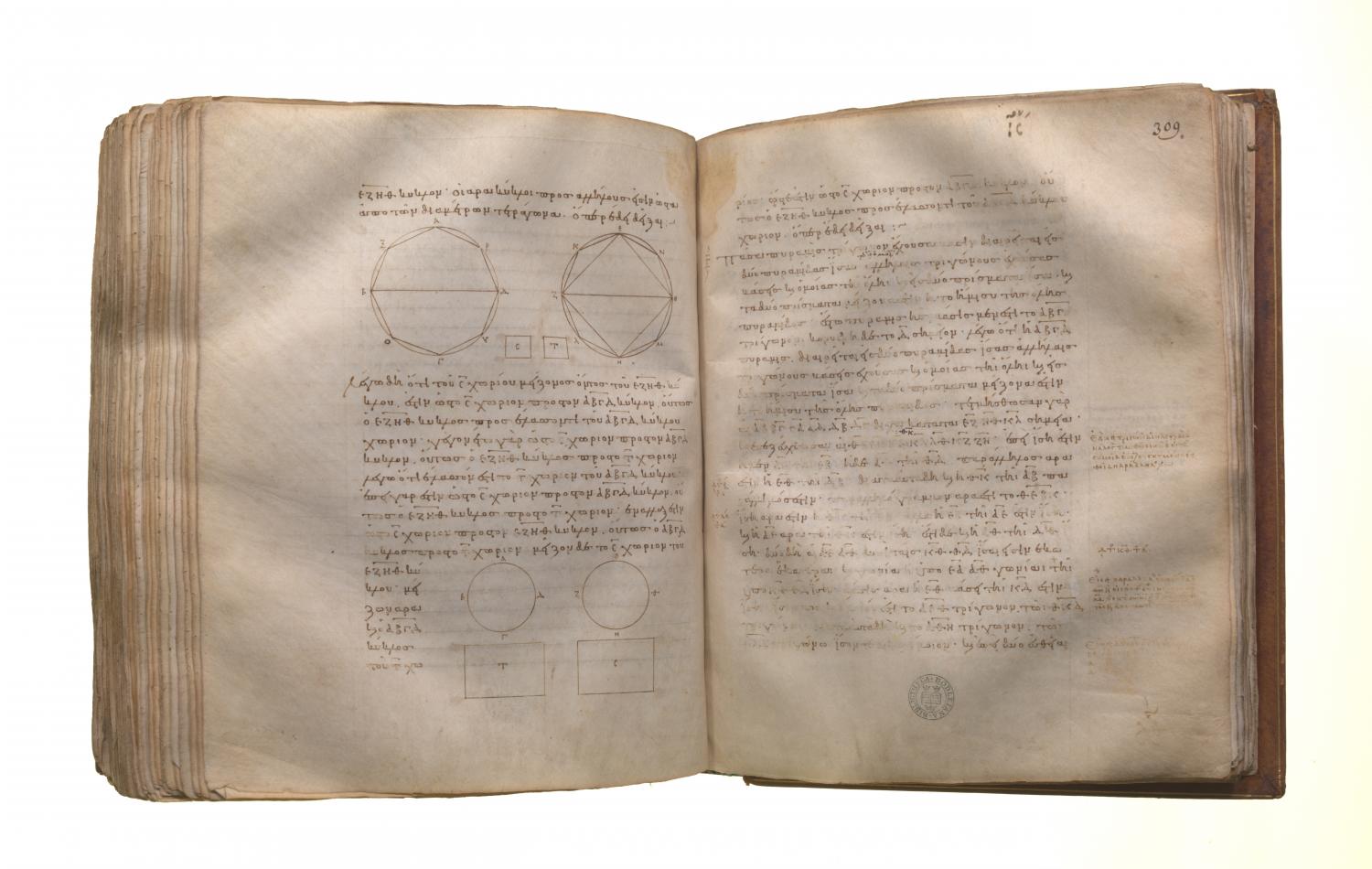Measurement of figures: Book 12 Proposition 2
Translations
Circles are to one another as the squares on the diameters. Let ABCD, EFGH be circles, and BD, FH their diameters; I say that, as the circle ABCD is to the circle EFGH, so is the square on BD to the square on FH. For, if the square on BD is not to the square on FH as the circle ABCD is to the circle EFGH, then, as the square on BD is to the square on FH, so will the circle ABCD be either to some less area than the circle EFGH, or to a greater. First, let it be in that ratio to a less area S. Let the square EFGH be inscribed in the circle EFGH; then the inscribed square is greater than the half of the circle EFGH, inasmuch as, if through the points E, F, G, H we draw tangents to the circle, the square EFGH is half the square circumscribed about the circle, and the circle is less than the circumscribed square; hence the inscribed square EFGH is greater than the half of the circle EFGH. Let the circumferences EF, FG, GH, HE be bisected at the points K, L, M, N, and let EK, KF, FL, LG, GM, MH, HN, NE be joined; therefore each of the triangles EKF, FLG, GMH, HNE is also greater than the half of the segment of the circle about it, inasmuch as, if through the points K, L, M, N we draw tangents to the circle and complete the parallelograms on the straight lines EF, FG, GH, HE, each of the triangles EKF, FLG, GMH, HNE will be half of the parallelogram about it, while the segment about it is less than the parallelogram; hence each of the triangles EKF, FLG, GMH, HNE is greater than the half of the segment of the circle about it. Thus, by bisecting the remaining circumferences and joining straight lines, and by doing this continually, we shall leave some segments of the circle which will be less than the excess by which the circle EFGH exceeds the area S. For it was proved in the first theorem of the tenth book that, if two unequal magnitudes be set out, and if from the greater there be subtracted a magnitude greater than the half, and from that which is left a greater than the half, and if this be done continually, there will be left some magnitude which will be less than the lesser magnitude set out. Let segments be left such as described, and let the segments of the circle EFGH on EK, KF, FL, LG, GM, MH, HN, NE be less than the excess by which the circle EFGH exceeds the area S. Therefore the remainder, the polygon EKFLGMHN, is greater than the area S. Let there be inscribed, also, in the circle ABCD the polygon AOBPCQDR similar to the polygon EKFLGMHN; therefore, as the square on BD is to the square on FH, so is the polygon AOBPCQDR to the polygon EKFLGMHN. [XII. 1] But, as the square on BD is to the square on FH, so also is the circle ABCD to the area S; therefore also, as the circle ABCD is to the area S, so is the polygon AOBPCQDR to the polygon EKFLGMHN; [V. 11] therefore, alternately, as the circle ABCD is to the polygon inscribed in it, so is the area S to the polygon EKFLGMHN. [V. 16] But the circle ABCD is greater than the polygon inscribed in it; therefore the area S is also greater than the polygon EKFLGMHN. But it is also less: which is impossible. Therefore, as the square on BD is to the square on FH, so is not the circle ABCD to any area less than the circle EFGH. Similarly we can prove that neither is the circle EFGH to any area less than the circle ABCD as the square on FH is to the square on BD. I say next that neither is the circle ABCD to any area greater than the circle EFGH as the square on BD is to the square on FH. For, if possible, let it be in that ratio to a greater area S. Therefore, inversely, as the square on FH is to the square on DB, so is the area S to the circle ABCD. But, as the area S is to the circle ABCD, so is the circle EFGH to some area less than the circle ABCD; therefore also, as the square on FH is to the square on BD, so is the circle EFGH to some area less than the circle ABCD: [V. 11] which was proved impossible. Therefore, as the square on BD is to the square on FH, so is not the circle ABCD to any area greater than the circle EFGH. And it was proved that neither is it in that ratio to any area less than the circle EFGH; therefore, as the square on BD is to the square on FH, so is the circle ABCD to the circle EFGH. Therefore etc. Q. E. D.Lemma. I say that, the area S being greater than the circle EFGH, as the area S is to the circle ABCD, so is the circle EFGH to some area less than the circle ABCD. For let it be contrived that, as the area S is to the circle ABCD, so is the circle EFGH to the area T. I say that the area T is less than the circle ABCD. For since, as the area S is to the circle ABCD, so is the circle EFGH to the area T, therefore, alternately, as the area S is to the circle EFGH, so is the circle ABCD to the area T. [V. 16] But the area S is greater than the circle EFGH; therefore the circle ABCD is also greater than the area T.


